Welcome to the 13th edition of Ground Effect from Ravensdown
With Garry Diack, Ravensdown CEO
One of the things that attracted me to the CEO job at Ravensdown was the opportunity to join not just one of the country’s great companies, but to formally join a constituency of invested, passionate and truly innovative stewards and architects of the rural economy who significantly influence our national fortunes. The prescient challenges around environmental sustainability, climate change and intensification of land use are the source of debate for all New Zealanders. While as a nation we are still learning how to constructively hold these debates, our shareholders are consistently standing toe to toe with these challenges.
Committed to smarter farming for a better New Zealand, our publication, Ground Effect, is both a call to action for our industry and a showcase of the commitment that smarter farming throughout the sector is no pipe dream. There are many precedents to follow, and we see Ground Effect as the platform for their celebration and sharing.
It is both impressive and informative to see contributions from Manaaki Whenua – Landcare Research on soil carbon stocks, or the Our Land and Water National Science Challenge on N and P mitigations.
Whether you’re new to farming, been around the traps for a while, or returning to the agsector like me, the changing landscape in which we find ourselves means that learning and evolving practices have never been more important, and is indeed stepping up in both pace and involvement.
Wool has suffered from these changing patterns more than most, so it’s inspirational to see the Ramsden family who farm at iconic Moanaroa Station near Dannevirke work with Big Save Furniture to circumvent the supply chain and add value to their wool clip. Milled wheat and consumer tastes are also put under the microscope by Ivan Lawrie from the Foundation for Arable Research on page 34.
In the dairy sector, Camden Group in Canterbury show how they’ve managed the nitrogen change to a 190kg/ha limit and the importance of testing and tracking fertiliser use to monitor production.
Speaking of nitrogen, there’s been a lot of focus on nitrates and drinking water and quite a bit of misinformation, so it’s great that we hear directly from the authority on this subject. Professor Frank Frizelle is a colorectal surgeon and chief advisor to Bowel Cancer New Zealand. He, along with colleague Dr Jacqui Keenan, are eminently more qualified to address this important topic than freshwater ecologists and activists.
We also visit a young Taupo couple, Ruby Mulinder and Sean Nixon, who, against the odds, have managed to purchase their first farm. They are treading their own path by diversifying into sheep milking while still maintaining a sheep and beef model. On page 20 we see our consultants have been helping with engagement in the Waikato on Farm Environment Planning. The behind-the-scenes policy and advocacy work that the co-operative’s specialists carry out for shareholders is also of enormous value, covered on page 38.
I hope you find this edition as informative as I did and that these positive examples of how to thrive in a changing landscape inspire new ideas and understanding
I’d love to hear from you at ceo@ravensdown.co.nz
Garry Diack, Ravensdown Chief Executive
Download your version of Ground Effect

Growing the demand for New Zealand wool
With Tom O'Sullivan, Campaign For Wool Initiative Chairman. Words by Shannon Dunn

From farm to furniture: adding value to strong wool
A generational farming family is embracing a new direction for their crossbred wool by supplying New Zealand-owned manufacturer Big Save Furniture.

N-190 Heat Map: recording and reporting with HawkEye®
By Rangi Holland, HawkEye Customer Technology Specialist
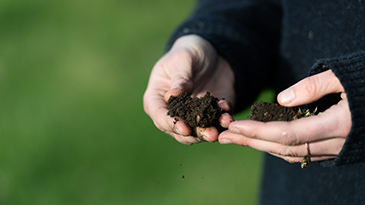
New Zealand’s carbon soil stocks: what do we know?
Why soil carbon stocks are important and where we sit on the world spectrum when it comes to the carbon levels in our soils.

Walking the path less trodden
Sean Nixon and Ruby Mulinder talk Ravensdown through the process of first-farm purchase, running a smart sheep and beef system in a nutrient sensitive catchment, and their venture into sheep milking.
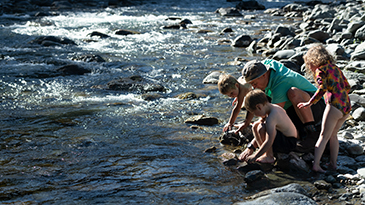
Hype gets in the way of cause and effect
Colorectal cancer surgeon Professor Frank Frizelle and researcher Dr Jacqui Keenan highlight the potential misconception in confusing ‘association’ with ‘cause and effect’ when it comes to nitrates and cancer.
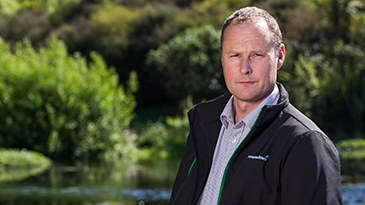
Farm Environment Planning: preparing for the journey ahead
Ravensdown Principal Environmental Consultant Adrian Brocksopp discusses how a workshop run in the Waikato helped several farmers take their first actions in preparation for Farm Environment Planning.
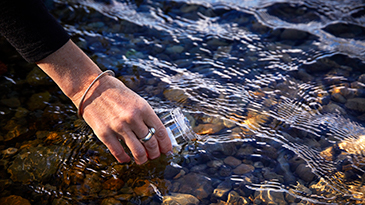
Water quality: we’re on the right track
Our Land and Water scientists’ modelling of on-farm mitigation actions shows that if all mitigation techniques are adopted, most catchments will meet current water quality objectives by 2035.
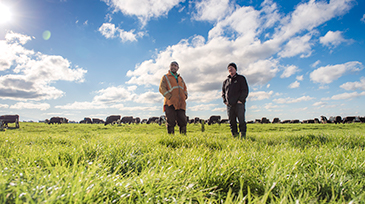
Measure, monitor, manage: N-190 on a Canterbury dairy farm
Canterbury dairy farming operation Camden Farms have been focusing on lowering their nitrogen (N) use ahead of the N-190 nitrogen cap that came into effect in July 2021.

Frew’s Transport: keeping the wheels turning with ClearTech®
Twenty years ago, drawing water for truck-wash was a relatively straightforward exercise for Frew’s Transport, a livestock and trucking operation based in Darfield, Canterbury.

Can gibberellic acid substitute nitrogen fertiliser?
As farmers seek new ways to maintain pasture production and feed supply under ‘capped’ nitrogen (N) fertiliser, alternatives such as gibberellic acid (GA) should be explored.

Elementary essentials #4: Sulphur (S)
By Dr Ants Roberts, Ravensdown Chief Scientific Officer

To eat wheat: local or imported?
Most of us eat grains every day, in bread, cereals, biscuits, pasta and more. But do you know where the grain in this food has come from – or more specifically, the wheat?
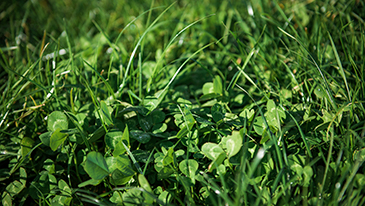
The right rhizobia
With farmers under pressure to reduce fertiliser nitrogen (N) inputs, a team has been investigating an opportunity to match superior strains of rhizobia with modern white clover cultivars to improve biological nitrogen fixation (BNF).

In your corner: how Ravensdown works to influence policy matters
Policy is unlikely to go away any time soon, so the best option for Ravensdown and other industry bodies is to take a stand to ensure sensible outcomes for our farmers.
